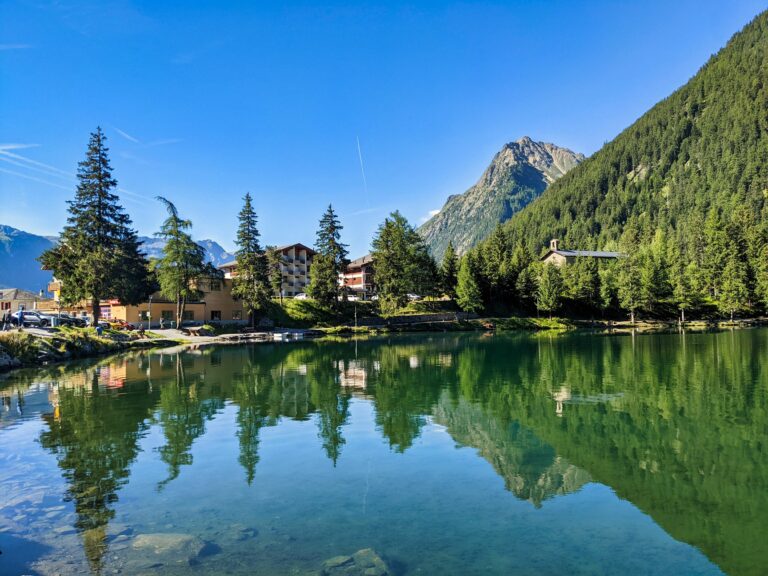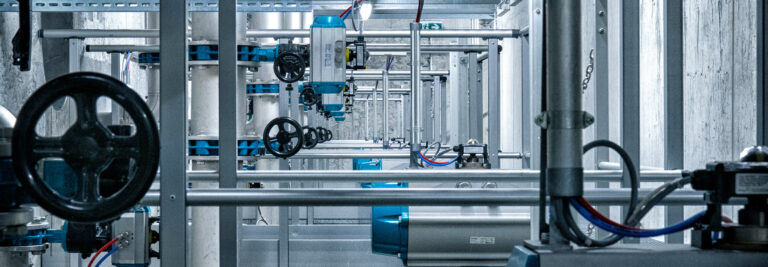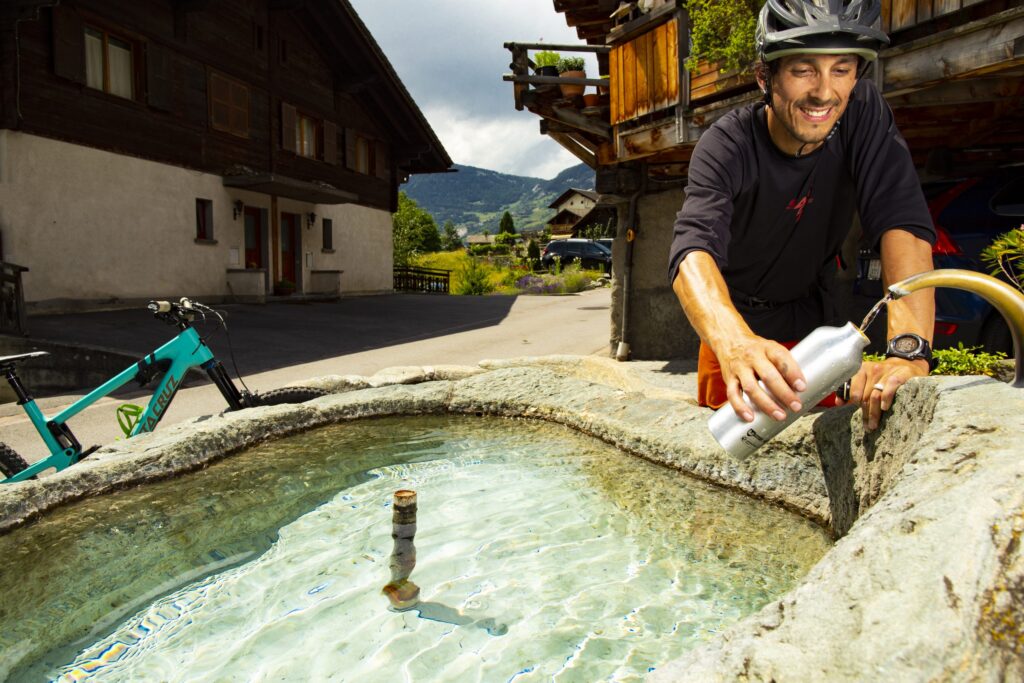Enter before 15 October!
Residency programme
Bring your project to life in a unique ecosystem!
After four editions organised in the form of a call for projects, the BlueArk Challenge is getting a makeover! It is becoming a residency programme for SMEs, start-ups and/or water specialists. In 2024 and 2025, the BlueArk Challenge will focus on the multi-use of water.
As a company or specialist, you can now apply for this programme, which will allow you to set up for three months in the municipality of Val de Bagnes (Valais/Switzerland) and benefit from the region’s water-related facilities and data. This will enable you to test your innovations in the field, under real conditions. A budget of up to CHF 50,000 will be allocated to support your installation and development work.

enter the BlueArk Challenge before 15 October
why?
As a company or water specialist, the BlueArk Challenge residency programme offers you the following services for a maximum of three months and up to a budget of CHF 50,000:






- Privileged access to infrastructure and data related to water in the Val de Bagnes region, allowing you to test your solution in real-world conditions in an alpine environment
- A minimum cash amount of CHF 10,000 to finance the initial technical elements or costs associated with your installation
- Direct feedback from an initial client (the municipality of Val de Bagnes and its water management service ALTIS)
- Logistical infrastructure (offices and accommodation) so that you or your team can set up and work as close as possible to the Val de Bagnes water networks
- Tailor-made support to deploy your solution and seek additional funding
- Network of specialists in the water sector to complement the technical or economic aspects of your innovative solution.
enter the BlueArk Challenge before 15 October
how?
Conditions
The following conditions must be met in order to apply for the BlueArk Challenge programme:
First and foremost, you must propose a solution that addresses the challenge of multi-use water, from the perspective of infrastructure, governance and user awareness of their consumption (see details below).
Your solution, project or idea must have reached a certain stage of maturity, with technology that has moved beyond the research stage (Technology Readiness Level – TRL 4 to 7).
You must have the ambition to develop your solution in real-world conditions.
Vous devez vous installer sur place dans la région de l’Entremont durant le temps nécessaires pour effectuer les tests.
Do you meet these requirements? Register by 15 October using the application form.
Process
1
You fill in the application form
2
Your application will be reviewed within one month of submission.
3
If your application is accepted, you will receive an invitation to present your project/solution to a selection committee (either digitally or in person).
4
The selection committee will decide on your application and the amounts to be awarded.
5
You set up on site and can start the pilot tests.
I discover the challenge
Enter before 15 October!
Promoting innovation in the multi-purpose use of water
At a time of climate change and its consequences on water resources, the issue of the multiple uses of blue gold is becoming increasingly important. Between preserving water quality, meeting irrigation needs for agriculture, protecting the environment and ecosystems, and meeting the needs of tourism, particularly through artificial snowmaking, it is becoming imperative to find the right balance to maintain the viability of the system, while taking into account the different users.
Although there are many issues surrounding this multi-purpose use, we would like to focus on three areas:
Infrastructure
- How can existing infrastructure be optimised? Leak detection, improved catchment systems, etc.
- How can we create new infrastructure to optimise water management? Recovering ‘lost’ water for other uses (e.g. collecting rainwater to clean solar panels, reusing grey water for cleaning, etc.), tapping into new, unexploited sources, etc.
- How can existing networks be connected and converged? Heat and cooling production using drinking water, wastewater or surface water, electricity or hydrogen production via drinking water and wastewater networks, etc.
Governance
- How should we prioritise uses and users? Who can withdraw what quantity? What is the minimum quantity that must be guaranteed for whom?
- How can we best use data to manage water networks? Collecting all data, using it but also storing it, transparency and data protection…
- How can water pricing models be transformed? Surcharge excessive consumption, find new models for valuing water…
Awareness raising
- How can we improve users’ water footprint? How much water do we consume on average? Compare users’ consumption with that of their neighbours, measure the human impact on the water cycle, etc.
- How can gamification be used to raise awareness about water consumption? Raising awareness of personal behaviour, communicating quick actions that can be taken to reduce impact…




Enter before 15 October!
What awaits you in Val de Bagnes?
With an area of 302 km², Val de Bagnes is the fourth largest municipality in Switzerland. It has more than 10,000 inhabitants of 65 different nationalities. According to the latest survey conducted by the Swiss Confederation, residential and infrastructure areas accounted for 2.6% of its surface area, agricultural areas for 14.5%, wooded areas for 16.2% and unproductive areas for 66.7%. In terms of employment, the municipality has 6,657 jobs: 4.3% in the primary sector, 17% in the secondary sector and 79% in the tertiary sector. Tourism is one of the key economic sectors, particularly through the resort of Verbier.
The Val de Bagnes water networks have the following characteristics:
Drinking water
- 23.1 km of aqueducts and tunnels between Louvie and Pierre Avoi
- 1 dam in Louvie, 1 hillside reservoir in Moneyeux
- 56 SCAV distribution networks, including 31 private networks
- 142 sources, 98 catchment and collection chambers
- 5 treatment plants, 6 pumping stations
- 51 reservoirs
- 526 hydrants
Wastewater
- 1.5 million cubic metres of treated water
- 125 kilometres of public sewers
- 7,500 rooms
- 447 outlets
Irrigation
- Approximately 2.6 to 2.8 million m³ used (estimate according to the Master Plan of June 2023)
Available data
- Flow rate, pressure, quality
Previous editions
2024 - Call for projects

Using artificial intelligence and a digital twin to guarantee the supply of drinking water in municipalities and promote rainwater infiltration through an innovative infiltration box. These are the functions of the two innovations recognised by the jury of the 6th edition of the BlueArk Challenge.
2022 - Call for projects

Continuously monitoring wastewater using artificial intelligence, better quantifying the value of water via a digital tool, analysing water quality directly at its source using a connected container, and preventing water hammer in water pipes using an innovative solution: these four concrete ideas were recognised at the fifth edition of the BlueArk Challenge.
2021 - Call for projects

A filter to remineralise rainwater collected in isolated high-altitude locations, dynamic valves integrated into the network and coupled with algorithms to prevent stagnation of drinking water, a microturbine for measuring and adjusting irrigation flow that uses artificial intelligence to adapt to weather conditions and soil needs, and infrared cameras for determining torrent flow rates: these four innovative concepts were recognised in the BlueArk Challenge 2021 call for solutions.
2020 - Call for projects

No fewer than 59 companies took part in the BlueArk Challenge call for solutions, with the aim of improving water management. Of the 41 proposals submitted, five were selected by a jury of specialists. The winners each received a cheque for CHF 10,000 and proactive support from the BlueArk Entremont Innovation Hub to implement these promising solutions.
2019 - Hackathon

Over the course of a weekend, the Bagnes region was transformed into the capital of water management! Two major events on this theme (a hackathon and a conference) were organised at the Espace Saint-Marc in Le Châble, bringing together nearly 250 people. The Aquavision project, an IT solution that continuously monitors the quality of water in the network, won the second edition of the BlueArk Challenge hackathon. The thirty or so IT developers present worked tirelessly on six concrete challenges encountered in everyday life by water professionals. The Smart Water conference, which took place at the start of the hackathon, welcomed more than a hundred people for its first edition. Both events were organised by the BlueArk Entremont Innovation Hub, ALTIS Group and The Ark Foundation.
2019 - Hackathon

The Naïade project, which uses an IT solution to manage a complex water network, won the first edition of the BlueArk Challenge, a hackathon dedicated to energy, on Saturday evening in Le Châble. Organised by the BlueArk Entremont Innovation Hub, ALTIS Group, Monthey Industrial Services and The Ark Foundation, the event welcomed more than 100 people, including 55 developers. They worked tirelessly on 11 real-life challenges encountered by energy professionals in their daily work. Three other projects were rewarded after 24 hours of intensive work.
Questions ?
If you have any questions about the application process, the context, or any other topic related to the BlueArk Challenge,
please contact us immediately at the following address: contact@blueark-challenge.ch

Votre personne de contact
Anyssia Bovier
058 332 21 20
AJOUTER UN E-MAIL
